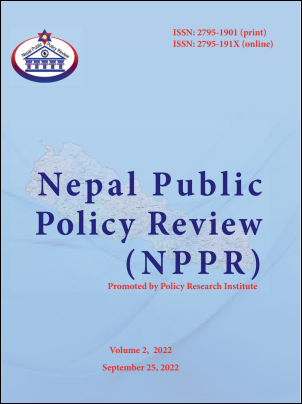Nonlinear Impact of Inflation on Economic Growth in Nepal: A Smooth Transition Regression Approach
Keywords:
Inflation, Growth, Nonlinearity, Threshold, Logistic Smooth Transition Regression, LSTRAbstract
Macroeconomic stability is one of the most important macroeconomic goals for all countries. In recent years, the Nepalese economy has been experiencing inflation twice the economic growth rate, posing a threat to macroeconomic stability. Thus, careful investigation of the relationship between inflation and economic growth is required. This study assesses the existence of a nonlinear relationship between inflation and economic growth in the Nepalese context. The assessment is performed by considering the possibility of smoothly changing slope parameters to maximise economic growth or minimise growth losses and to determine the optimal inflation level along with the speed of inflation response to economic growth. The study applies a Logistic Smooth Transition Regression model that Terasvirta (1998, 2004) developed to estimate an optimal inflation rate using annual time-series data from 1976 to 2019. The study finds a nonlinear relationship between inflation and economic growth and estimates an optimal inflation threshold of 6.38±1.36 per cent for the Nepalese economy. It also shows that inflation positively correlates with economic growth up to the threshold level and that the association becomes negative beyond that level. This study suggests that inflation beyond the threshold level harms economic growth, while inflation below has a favourable effect. The findings assist policymakers in making an informed decision, providing leverage in inflation control and creating an atmosphere encouraging economic growth.
Downloads
Downloads
Published
How to Cite
Issue
Section
License
Copyright (c) 2022 Hari Prasad Paudel, Nirmal Kumar Raut

This work is licensed under a Creative Commons Attribution-NonCommercial 4.0 International License.




